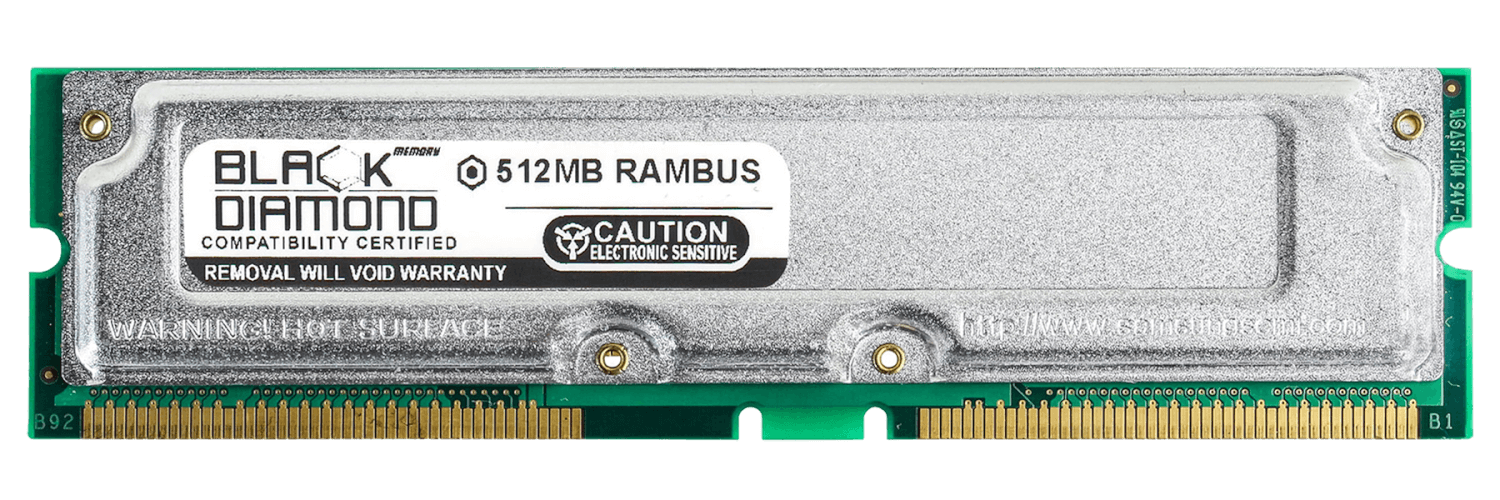RDRAM
Stands for "Rambus Dynamic Random Access Memory."
RDRAM, developed by Rambus Inc., was a high-performance type of computer memory introduced in the late 1990s. Its high-speed bus offered significantly faster data transfer speeds compared to SDRAM (Synchronous DRAM). While typical SDRAM transferred data at speeds up to 133 MHz, RDRAM could reach speeds of over 1 GHz, providing a significant performance boost for memory-intensive tasks.
RDRAM's speed advantage came with increased cost and complexity, limiting its widespread adoption as system memory. As a result, it was mostly used in high-performance applications like video memory for graphics cards, cache memory for CPUs, and system memory for workstations and servers.
An advanced version called Direct Rambus DRAM (DRDRAM) further increased performance with data transfer rates up to 1.6 GHz. The fastest RDRAM memory module (designated as PC1600) supported a bandwidth of 6400 megabytes over two 16-bit busses). Despite its impressive speed, RDRAM was eventually overshadowed by more cost-effective technologies like DDR SDRAM, which became the industry standard.
NOTE: DDR memory modules are often called DIMMS while Rambus modules are called RIMMs.

 Test Your Knowledge
Test Your Knowledge